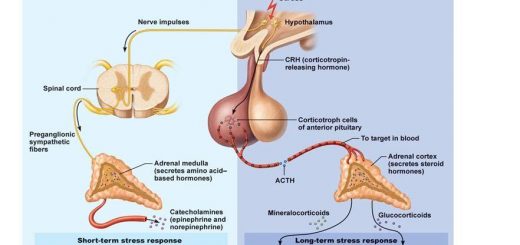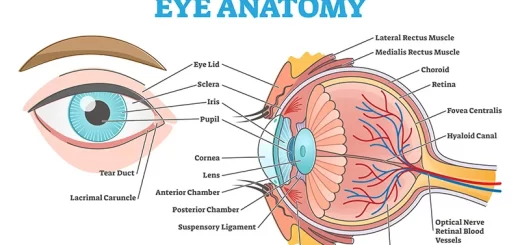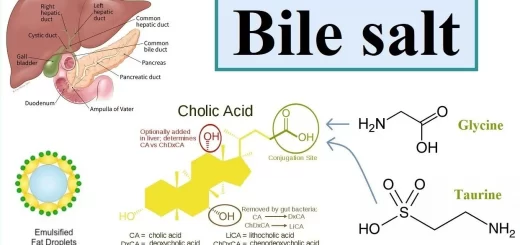Popliteal fossa structure, Skeleton of the leg, Shaft and Joints of tibia
The popliteal fossa is located at the back of the knee joint, It is known as the hough or knee-pit in analogy to the armpit, The bones of the popliteal fossa are the femur & the tibia, it is an area where blood vessels and nerves pass superficially, and with an increased number of lymph nodes, and it is continuous with the fascia lata of the leg.
Popliteal fossa
It is a diamond-shaped intermuscular space present on the back of the knee. It is the main conduit for neurovascular structures entering and leaving the leg. It is diamond-shaped with four borders. These borders of the popliteal fossa are formed by the muscles in the posterior compartment of the leg and thigh.
Boundaries
- Laterally: The biceps femoris superiorly and the gastrocnemius (lateral head) & plantaris muscle inferiorly.
- Medially: Semimembranosus & semitendinosus muscles superiorly and medial head of gastrocnemius muscle inferiorly.
- Roof: Superficial fascia & deep fascia of the thigh, posterior cutaneous nerve of the thigh, small saphenous vein, and sural nerve.
- Floor: formed by Popliteal surface of the femur, back of knee joint, popliteus muscle.
Contents
- Popliteal vessels
- Tibial (medial popliteal) nerve
- Common peroneal (lateral popliteal) nerve
- Genicular branch of obturator nerve
- Popliteal lymph nodes
- Popliteal fat
Skeleton of the leg
In the leg, the bones are the tibia medially and the fibula laterally.
Tibia
The tibia is the main bone of the leg, forming what is more commonly known as the shin. It expands at the proximal and distal ends, articulating at the knee and ankle joints respectively. It is the second-largest bone in the body; this is due to its function as a weight-bearing structure.
The upper end
It is widened by the medial and lateral condyles, aiding in weight-bearing. The condyles form a flat surface, known as the tibial plateau. This structure articulates with the femoral condyles to form the major articulation of the knee joint. Located between the condyles is a region called the intercondylar eminence – this consists of two tubercles and a roughened area. This area is the main site of attachment for the ligaments and the menisci of the knee joint. The tibial intercondylar tubercles fit into the intercondylar fossa of the femur.
On the anterior surface of the proximal tibia, inferior to the condyles, the tibial tuberosity is situated, This is where the patella ligament attaches. The medial condyle has an oval upper articular surface and a transverse groove on its posterior aspect for the insertion of the semimembranosus muscle. The lateral condyle has a circular upper articular surface.
The structures attached to the intercondylar area
Anterior intercondylar area:
- Anterior horn of medial semilunar cartilage.
- Anterior cruciate ligament.
- Anterior horn of lateral semilunar cartilage.
Posterior intercondylar area:
- Posterior horn of lateral semilunar cartilage.
- Posterior horn of medial semilunar cartilage.
- Posterior cruciate ligament.
The anterior & posterior horns of the lateral semilunar cartilage lie just in front and just behind the intercondylar eminence.
Shaft of the tibia
- The shaft is triangular in the cut section having 3 surfaces & borders.
- The surfaces are: medial, lateral, and posterior.
- The borders are: anterior, interosseous, and medial.
Borders
- The anterior border is marked at its beginning by the tibial tuberosity. It is palpable down the anterior surface of the leg as the shin. Here, the periosteal covering of the tibia is susceptible to damage, presenting clinically as bruising. It separates the medial from the lateral surface.
- The medial border is distinct only in its middle 1/3; it separates the medial from the posterior surfaces. The great saphenous vein and the saphenous nerve run along with it.
- The interosseous border is distinct is also in its middle 1/3 only; it separates the lateral from the posterior surfaces. The interosseous membrane between the tibia and fibula is attached to it.
Surfaces
- The medial surface is subcutaneous and can be left easily under the skin & has no muscle attachment except sartorius, gracilis, and semitendinosus (upper part medial surface).
- The lateral surface lies between the anterior and the interosseous borders & gives origin to the tibialis anterior from its upper 3/2.
- The lateral surface has two lines (the soleal line and the vertical line).
- The soleal line runs downwards and medially and gives attachment to the soleus muscle and separates the upper triangular area for the popliteus muscle.
- The vertical line below the soleal line divides the back of tibia into medial and lateral parts that give attachments to the flexor digitorum longus and tibialis posterior respectively.
The lower end has 5 surfaces:
- Literal surface has a fibular notch (for the lower end of the fibula).
- Medial surface has a downward projection called the medial malleolus.
- Posterior surface has a groove for the tendon of flexor hallucis longus.
- Anterior surface has no special characteristics.
- Inferior surface is concave & articular with the upper surface of the talus to form the ankle joint.
Medial malleolus
- It has a comma-shaped articular surface (for the talus) on its lateral surface.
- It projects as an apex anteriorly, the apex gives attachment to the powerful medial (deltoid) ligament of the ankle joint.
- On the back of the medial malleolus, feel the pulsations of the posterior tibial artery. The posterior surface of the medial malleolus has a deep and broad groove called the malleolar sulcus (for the tendons of tibialis posterior and flexor digitorum longus).
Joints of tibia
1- Joints of the upper end:
- Knee joint: between the upper surface of tibial condyles and femoral condyles (synovial modified hinge).
- Superior tibiofibular joint: between fibular facet on the inferior surface of the lateral condyle of tibia head of the fibula (synovial plane joint).
2- Joints of the lower end:
- Ankle joint: between the inferior surface of its lower end & the smooth lateral surface of the medial malleolus and talus (synovial hinge).
- Inferior tibiofibular joint: between the fibular notch and lower end of the fibula (fibrous syndesmosis).
3- Joint of the shaft:
Interosseus membrane: between interosseus borders of tibia and fibula (fibrous joint).
The fibula
It is a very thin and long bone on the lateral side of the tibia. It is a long bone that has an upper end, a shaft, and a lower end. Upper end: has head and neck
- The head is cylindrical and has two main features: It possesses an upwards projection (from its posterolateral aspect) called the styloid process (in which the biceps tendon is inserted). The upper part of its medial surface has a circular flat articular facet (to articulate with the fibular facet on the lateral condyle of the tibia).
- The neck is the constricted upper of the shaft just below the head and is related to the common peroneal nerve and circumflex fibular artery laterally and anterior tibial artery medially.
Shaft
The shaft is long and is covered by muscles except a triangular area above the lateral malleolus which is subcutaneous. The shaft is triangular in the cut section having 3 surfaces & borders. The surfaces are: anterior, lateral, and posterior. The borders are: anterior, interosseous, and lateral.
Borders
- The anterior border between the anterior & lateral surfaces.
- The medial border (interosseous border) between the anterior & posterior surfaces.
- The lateral border between the lateral & posterior surfaces.
Surfaces
- The anterior surface gives attachment to extensor digitorum longus, extensor halluics longus, and peroneus tertius.
- The lateral surface gives attachment to peroneus longus and brevis.
- The posterior surface has a medial crest that divides it into medial and lateral parts that give attachment to tibialis posterior and flexor hallucis longus respectively.
Lower end
It is flat called lateral malleolus. Its lateral surface is subcutaneous and is continuous above with a rough, triangular, subcutaneous area of the shaft. Its medial aspect has a smooth triangular articular facet (for the lateral surface of the talus). Superior to the articular surface of the lateral malleolus is a rough triangular interosseous area that is connected to the tibia by the interosseous tibiofibular ligament & malleolar fossa below and behind the articular facet. Its posterior surface has a shallow groove (for the tendons of the peroneus longus & brevis).
How to know if a fibula is right or left?
- The head is cylindrical above.
- The lower end (lateral malleolus) is flattened from side to side.
- The malleolar fossa is found at the posterior part of the medial surface of the lateral malleolus.
You can know whether a fibula is right or left simply by looking at the malleolar fossa in the lateral malleolus, if it is on the right-hand side, the fibula is right and vice versa.
Leg structure, muscles, nerves, bones, anatomy and function
Muscular tissue types, function, structure, definition & anatomy
Neuro-Muscular Junction properties, Functions and types of skeletal muscles
Excitability changes in skeletal muscle fibers during activity and Causes of muscle fatigue
Medial compartment of thigh muscles, Growth and regeneration of smooth muscle fibers
Gluteal region structure, muscles, nerves & Posterior compartment of thigh muscles



